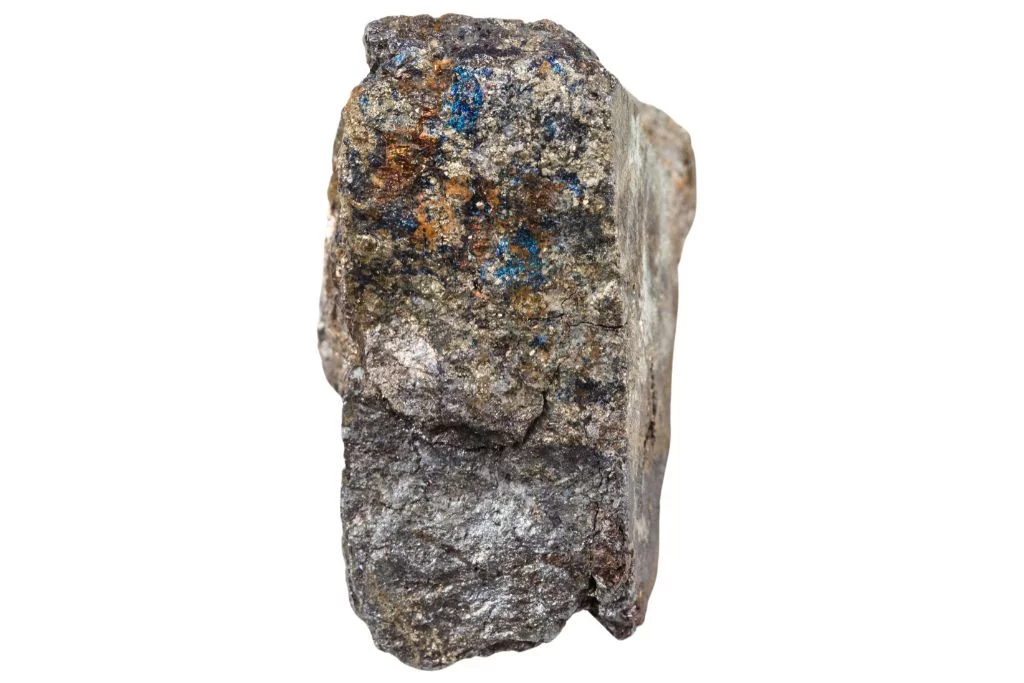Physical Appearance of Arsenopyrite
Arsenopyrite is a striking mineral with a distinctive appearance that sets it apart from other crystals. This iron arsenic sulfide mineral typically exhibits a silvery-white to steel-gray color, often with a metallic luster that gives it a reflective quality. The crystal structure of arsenopyrite is orthorhombic, resulting in well-formed prismatic crystals that can range from short and stubby to long and slender.
Crystal Structure and Forms
One of the most notable features of arsenopyrite is its tendency to form complex twinned crystals. These twins often create star-shaped or cross-like formations, adding to the mineral’s visual appeal. In some cases, arsenopyrite may also occur in massive, granular, or columnar aggregates, providing a variety of textures and forms for collectors and enthusiasts to appreciate.
Unique Characteristics
Arsenopyrite stands out due to its hardness, which ranges from 5.5 to 6 on the Mohs scale, making it relatively resistant to scratching. The mineral’s high specific gravity, typically between 5.9 and 6.2, gives it a surprising heft for its size. When freshly broken or scratched, arsenopyrite may emit a garlic-like odor due to the presence of arsenic, a characteristic that helps in its identification.
Surface Features and Alterations
Over time, arsenopyrite may develop a tarnish on its surface, altering its appearance to a dull gray or even black color. This tarnish is often accompanied by iridescent hues, creating a captivating play of colors on the crystal’s surface. In some instances, arsenopyrite may also display striations on its crystal faces, adding intricate patterns to its already complex structure.
Historical and Cultural Significance of Arsenopyrite
Arsenopyrite, also known as mispickel, has been mined since ancient times for its arsenic content. The Romans and Greeks used arsenic compounds derived from arsenopyrite as pigments and in medicines. During the Middle Ages, alchemists experimented with arsenopyrite in their quest to transmute base metals into gold. In more recent history, arsenopyrite became an important ore of arsenic used in pesticides and wood preservatives, though this use has declined due to toxicity concerns.
Metaphysical Associations
In crystal healing and metaphysical practices, arsenopyrite is believed to have powerful energetic properties. It is thought to enhance mental clarity and stimulate intellectual pursuits. Some practitioners claim it can help overcome fears and phobias, promoting courage and self-confidence. Arsenopyrite is also associated with manifestation, supposedly aiding in bringing one’s desires and goals into reality.
Common Uses and Benefits
Today, arsenopyrite has limited industrial applications due to environmental and health concerns surrounding arsenic. However, it remains valued by mineral collectors for its distinctive metallic luster and interesting crystal formations. In alternative medicine and crystal therapy, arsenopyrite is used in meditation practices and energy healing. Proponents believe it can help balance the chakras, particularly the solar plexus chakra, and promote overall well-being.
Traditional and Modern Applications
Traditionally, arsenopyrite was used in various metallurgical processes and as a source of arsenic for pesticides. In modern times, its applications are more niche. Some artisans incorporate arsenopyrite into jewelry and decorative objects, prizing its unique appearance. In scientific research, arsenopyrite is studied for its role in geochemical processes and as an indicator of gold deposits in certain geological formations.

